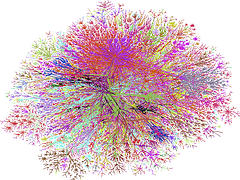
- Image by jurvetson via Flickr
Tech companies, government agencies and academics are uniting to develop the technology needed to increase global telecommunications networks’ energy efficiency
The unbridled success of wireless networks for Internet access and beyond has brought mobile telecommunications to remote areas of Africa, safety to many a driver stranded roadside, and worldwide mobility to professionals who were once deskbound. Yet all of this has come at a steep environmental cost: The global network and technology required to run it produce 250 million tons of carbon dioxide emissions annually, roughly the same as is produced yearly by 50 million automobiles (20 percent of all the autos in the U.S.), according to Green Touch, a new international consortium of businesses, government agencies and academics formed to address this problem.
The consortium’s response, announced Monday during a press conference in London, is for its members to develop the technology needed to make global telecommunications networks run 1,000 times more energy efficiently. A 1,000-fold reduction in energy use is roughly equivalent to being able to power the world’s communications networks, including the Internet, for three years using the same amount of energy that it currently takes to run them for a single day, according to Gee Rittenhouse, vice president of research at Bell Labs, the Murray Hill, N.J.–based research and development arm of Alcatel–Lucent.
It would take a forest the size of the U.K. to absorb 250 million tons of CO2, Rittenhouse said, adding, “That’s a lot of carbon dioxide. And you know what? It’s growing.”
The initial priorities of Green Touch—which includes Bell Labs, Stanford University’s Wireless Systems Lab (WSL), Freescale Semiconductor, Inc., and 12 other members—are to develop a road map to meet its five-year goal of demonstrating new energy-efficient networking technologies and to create a reference architecture for all members to follow to assure that these new technologies work together. “The technologies needed to cut emissions have yet to be invented,” Rittenhouse said. “With today’s technology, at the very best, we can hold (CO2 emissions) constant.”
Related articles by Zemanta
- New Green Touch Consortium Wants to Make Mobile Networks 1000x More Efficient (treehugger.com)
- Bell Labs spearheads Green Touch initiative to improve network energy efficiency (engadget.com)
- Bell Labs Says Networks Can Be 1000 Times More Energy Efficient (mobile.slashdot.org)








